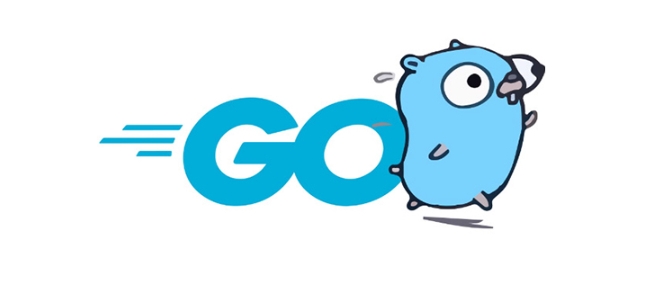Cache the Go build cache ($GOCACHE) to reuse compiled packages across CI runs. 2. Use go build -mod=readonly or -mod=vendor with cached or version-controlled vendor directories to avoid network delays and ensure reproducibility. 3. Run go test -p=4 to parallelize test execution based on available CPU, and reserve -race for separate scheduled jobs to avoid overhead on every run. 4. Apply build flags like -ldflags="-s -w" and -trimpath to reduce binary size and speed up linking. 5. Split CI jobs by building only changed services, running fast tests first, and using matrix builds for multi-platform binaries in parallel. 6. Use lightweight base images like golang:alpine or distroless with multi-stage Docker builds to reduce image size and speed up container operations. 7. Avoid redundant builds by comparing go.sum or source file checksums before executing go build. Optimizing Go CI/CD pipelines involves combining caching, parallelization, and incremental logic to minimize redundant work and reduce overall execution time.

Go is known for its fast compilation and simplicity, but in CI/CD environments, even small delays in build times can add up—especially when running tests, linters, or building binaries across multiple services. Optimizing Go builds isn’t just about faster feedback; it’s about reducing resource costs and improving developer velocity. Here’s how to make Go builds faster in your CI/CD pipeline.

1. Leverage Build Caching
Go has a built-in build cache that stores compiled object files. By default, go build uses this cache to avoid recompiling unchanged packages. In CI, though, the cache is often discarded between runs unless explicitly preserved.
What to do:

- Cache the Go build cache directory (
$GOPATH/pkg/cacheor$GOCACHE). - Most CI systems (GitHub Actions, GitLab CI, CircleCI) support path-based caching.
Example (GitHub Actions):
- name: Cache Go build cache
uses: actions/cache@v3
with:
path: |
~/.cache/go-build
key: ${{ runner.os }}-go-build-${{ hashFiles('**/go.sum') }}This ensures repeated builds reuse compiled packages unless dependencies change.

2. Use go build -mod=readonly and Vendor Dependencies (Optional)
By default, Go will fetch modules if go.mod changes. To prevent accidental writes and speed up dependency resolution:
- Use
-mod=readonlyto fail fast ifgo.modneeds changes. - Or, vendor your dependencies with
go mod vendorand use-mod=vendor.
Why it helps:
- Avoids network calls during build.
- Ensures consistent, reproducible builds.
- Can be faster in CI if dependency fetching is slow.
In CI:
go mod vendor go build -mod=vendor -o myapp .
Then cache the vendor/ directory or rely on version-controlled files.
3. Parallelize Tests with go test -p and -race Wisely
Running tests is often the slowest part of a Go CI pipeline.
Optimize with:
go test -p=4to run up to 4 packages in parallel (adjust based on CI CPU count).- Avoid
-raceby default in every run—use it in a separate, scheduled job.
Better approach:
# Fast feedback go test ./... -p=4 # Separate job for race detection go test ./... -race -short
The race detector adds significant overhead—don’t run it on every pull request unless critical.
4. Use Build Flags to Reduce Output Size and Time
Trim build output and skip unneeded info:
go build -ldflags="-s -w" -trimpath -o myapp .
-s: Omit symbol table.-w: Omit DWARF debug info.-trimpath: Remove absolute paths (also improves reproducibility).
These reduce binary size and slightly speed up linking.
Also, avoid -gcflags="all=-N -l" (disables optimizations) in CI unless debugging.
5. Split Jobs and Use Incremental Builds
Don’t build everything on every push.
Strategies:
- Build only changed services in a monorepo using tools like
git diff --name-only HEAD~1 | grep '.go$'. - Run fast linters and unit tests first, then slower integration tests or builds.
- Use matrix builds for multi-platform binaries (Linux, macOS, etc.) in parallel.
Example (GitLab CI):
build-linux:
script:
- CGO_ENABLED=0 GOOS=linux go build -o app .Run such jobs in parallel across OS/architecture combinations.
6. Use Lightweight Base Images for Docker Builds
If you’re containerizing:
- Use multi-stage builds.
- Start from
golang:alpineordistrolessfor final image.
Example:
# Build stage FROM golang:1.21-alpine AS builder COPY . . RUN go build -o app . # Final stage FROM scratch COPY --from=builder /app . CMD ["./app"]
Smaller images = faster push/pull in CI.
7. Avoid Rebuilding If Nothing Changed
Compare checksums of source files or go.mod before building.
Simple script:
if ! cmp -s go.sum checksum/go.sum; then go build -o app . cp go.sum checksum/go.sum fi
Or use tools like just, reflex, or CI-level caching with keys based on source hashes.
Summary
| Optimization | Benefit |
|---|---|
Cache $GOCACHE
|
Reuse compiled packages |
| Vendor or cache modules | Avoid network fetches |
Parallel tests (-p) |
Faster test execution |
Trim flags (-s -w, -trimpath) |
Smaller binaries, faster link |
Skip -race in PRs |
Reduce test time |
| Multi-stage Docker | Smaller, faster image builds |
| Incremental logic | Avoid unnecessary builds |
Optimizing Go builds in CI/CD isn’t about one big fix—it’s about stacking small wins. Start with caching, then parallelize, then eliminate unnecessary work.
Basically, work smarter, not harder—Go already compiles fast; make sure your pipeline isn’t slowing it down.
The above is the detailed content of Optimizing Go builds for faster CI/CD pipelines. For more information, please follow other related articles on the PHP Chinese website!

Hot AI Tools

Undress AI Tool
Undress images for free

Undresser.AI Undress
AI-powered app for creating realistic nude photos

AI Clothes Remover
Online AI tool for removing clothes from photos.

Clothoff.io
AI clothes remover

Video Face Swap
Swap faces in any video effortlessly with our completely free AI face swap tool!

Hot Article

Hot Tools

Notepad++7.3.1
Easy-to-use and free code editor

SublimeText3 Chinese version
Chinese version, very easy to use

Zend Studio 13.0.1
Powerful PHP integrated development environment

Dreamweaver CS6
Visual web development tools

SublimeText3 Mac version
God-level code editing software (SublimeText3)

Hot Topics
 A Guide to Go's Templating Engine
Jul 26, 2025 am 08:25 AM
A Guide to Go's Templating Engine
Jul 26, 2025 am 08:25 AM
Go's template engine provides powerful dynamic content generation capabilities through text/template and html/template packages, where html/template has automatic escape function to prevent XSS attacks, so it should be used first when generating HTML. 1. Use {{}} syntax to insert variables, conditional judgments and loops, such as {{.FieldName}} to access structure fields, {{if}} and {{range}} to implement logical control. 2. The template supports Go data structures such as struct, slice and map, and the dot in the range represents the current iterative element. 3. The named template can be defined through define and reused with the template directive. 4.ht
 Integrating Go with Kafka for Streaming Data
Jul 26, 2025 am 08:17 AM
Integrating Go with Kafka for Streaming Data
Jul 26, 2025 am 08:17 AM
Go and Kafka integration is an effective solution to build high-performance real-time data systems. The appropriate client library should be selected according to needs: 1. Priority is given to kafka-go to obtain simple Go-style APIs and good context support, suitable for rapid development; 2. Select Sarama when fine control or advanced functions are required; 3. When implementing producers, you need to configure the correct Broker address, theme and load balancing strategy, and manage timeouts and closings through context; 4. Consumers should use consumer groups to achieve scalability and fault tolerance, automatically submit offsets and use concurrent processing reasonably; 5. Use JSON, Avro or Protobuf for serialization, and it is recommended to combine SchemaRegistr
 How to pass a slice to a function in Go?
Jul 26, 2025 am 07:29 AM
How to pass a slice to a function in Go?
Jul 26, 2025 am 07:29 AM
When passing slices in Go, it is usually passed directly by value, because the slice header contains a pointer to the underlying array, and copying the slice header will not copy the underlying data, so the modification of elements in the function will affect the original slice; 1. If you need to reassign or adjust the slice length within the function and make the change take effect, you should pass the slice pointer; 2. Otherwise, you can pass the slice directly without using a pointer; 3. If reallocation may be triggered when using append, you must pass through the pointer to make the updated slice visible to the outside. Therefore, unless the entire slice is to be replaced, the slice should be passed in the form of a value.
 what does go vet do
Jul 26, 2025 am 08:52 AM
what does go vet do
Jul 26, 2025 am 08:52 AM
govetcatchescommonlogicalerrorsandsuspiciousconstructsinGocodesuchas1)misuseofprintf-stylefunctionswithincorrectarguments,2)unkeyedstructliteralsthatmayleadtoincorrectfieldassignments,3)sendingtoclosedchannelswhichcausespanics,4)ineffectiveassignment
 how to handle signals go by example
Jul 25, 2025 am 04:36 AM
how to handle signals go by example
Jul 25, 2025 am 04:36 AM
Use signal.Notify() in the os/signal package to register the specified signal (such as SIGINT, SIGTERM) into the buffer channel, so that the program can be captured instead of terminated by default; 2.
 How to use reflection in Go?
Jul 28, 2025 am 12:26 AM
How to use reflection in Go?
Jul 28, 2025 am 12:26 AM
Usereflect.ValueOfandreflect.TypeOftogetruntimevaluesandtypes;2.Inspecttypedetailswithreflect.TypemethodslikeName()andKind();3.Modifyvaluesviareflect.Value.Elem()andCanSet()afterpassingapointer;4.CallmethodsdynamicallyusingMethodByName()andCall();5.R
 How to embed a file into a string in Go?
Jul 26, 2025 am 05:40 AM
How to embed a file into a string in Go?
Jul 26, 2025 am 05:40 AM
To embed the file contents into the string of the Go program, you should use go:embed (Go1.16) to embed the file at compile time; 1. Add the //go:embed directive above the target variable; 2. Ensure the file path is correct and the file exists; 3. Use string type variables to receive text content; 4. Build the project through gobuild to include the file content. This method is safe and efficient and does not require additional tools, and ultimately implements the file contents directly into the binary file as strings.
 go by example http middleware
Jul 26, 2025 am 09:36 AM
go by example http middleware
Jul 26, 2025 am 09:36 AM
In Go language, HTTP middleware is implemented through functions, and its core answer is: the middleware is a function that receives and returns http.Handler, used to execute general logic before and after request processing. 1. The middleware function signature is like func (Middleware(nexthttp.Handler)http.Handler), which achieves functional expansion by wrapping the original processor; 2. The log middleware in the example records the request method, path, client address and processing time-consuming, which is convenient for monitoring and debugging; 3. The authentication middleware checks the Authorization header, and returns 401 or 403 errors when verification fails to ensure secure access; 4. Multiple middleware can be nested to adjust






